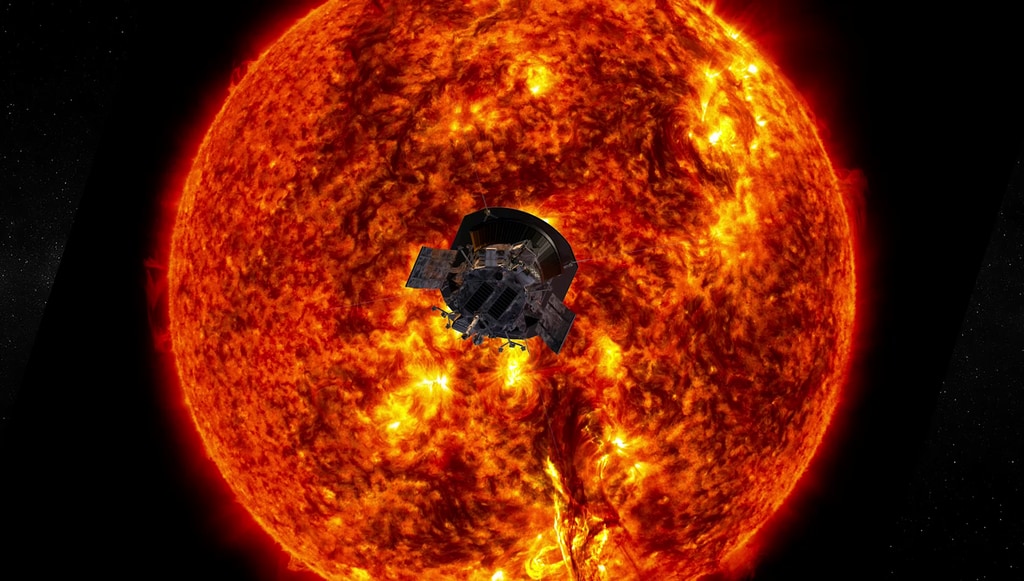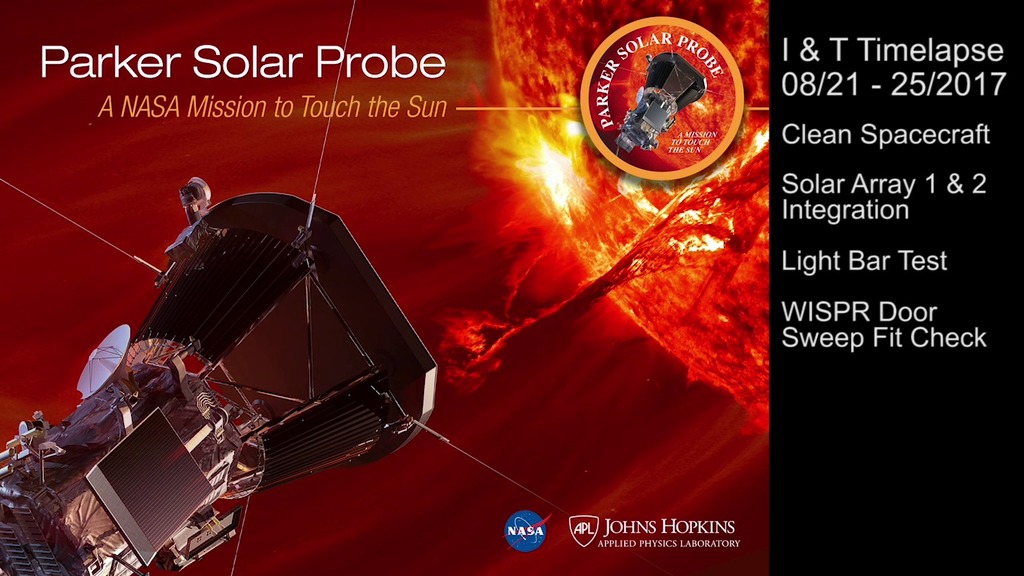Looking at the Corona with WISPR on Parker Solar Probe
The Wide-Field Imager for Solar Probe, or WISPR, is aboard NASA’s Parker Solar Probe to take images of the solar corona (the Sun’s atmosphere) and inner heliosphere. WISPR’s telescopes will provide white-light images of the solar wind, shocks, solar ejecta and other structures as they approach and pass the spacecraft. Parker Solar Probe is scheduled for launch in July 2018. It will be the first spacecraft ever to fly through the solar corona to investigate the evolution of the solar wind and heating of the solar corona. WISPR does not look directly at the Sun. Its very wide field-of-view extends from 13° away from the center of the Sun to 108° from the Sun.
This animation shows Parker Solar Probe flying through the solar corona and coronal mass ejections. The fields-of-view of the WISPR telescopes can be seen as the transparent pyramids pointing out the side of the spacecraft.
Credit: NASA/JPL/WISPR Team
This is an animation showing an orbit of Parker Solar Probe in relation to data from NASA’s STEREO mission with the Sun shown to scale in the center of the image. The orbit and data time scales are also the same. STEREO is the same distance away from the Sun as the Earth at 214 solar radii or 93 million miles from the Sun. At closest approach, Parker Solar Probe will fly to 11 solar radii, which is about 4 million miles from the Sun. The fields-of-view of the Wide-field Imager for Solar Probe (WISPR) telescopes can be seen as the transparent pyramids pointing ahead along the orbit. WISpr iis pointed slight away from the Sun to image the corona.
Credit: NASA/JPL/WISPR Team
This animation shows the fields-of-view (FOVs) of the two WISPR telescopes superimposed on data from the SECCHI instrument suite on NASA’s STEREO spacecraft. In this date, the Sun is in the center of the two circular coronagraph images. The image on the right is from SECCHI’s inner heliospheric imager. The movie shows how as Parker Solar Probe get closer to the Sun on each orbit, the size of the fields-of-view change. The FOV are scaled properly with respect to the size of the Sun, and the time scales of this change and the SECCHI images are the same.
Credit: NASA/JPL/WISPR Team
This video shows simulated WISPR observations of small flux ropes moving through a background corona and solar wind. It is based on 3-D density models of flux ropes - magnetic loops that lie in the heart of solar eruptions called coronal mass ejections. The video simulates what Parker Solar Probe will see for about six hours as the spacecraft is passing about 11 solar radii, or 4 million miles, from the Sun’s surface -- the closest approach the spacecraft will make during the mission. The Sun is to the left of the image and the white curves moving in the video show flux ropes being carried out by the solar wind. Scientists will map the movement of flux ropes to determine their origin and measure the speed of the solar wind.
Credit: NASA/JPL/WISPR Team
This video shows six days of simulated observations from WISPR on its second orbit as the spacecraft approaches and flies through a highly structured coronal streamer emanating from the Sun. The video starts as the spacecrafts is about 50 solar radii from the Sun; at the end, the spacecraft is about 35 solar radii from the Sun flying through the streamer. Density streamers form at the top of large magnetic structure in the corona that often overlie sunspots and active regions. They are the corona rays that become visible during total solar eclipses.
Credit: NASA/JPL/WISPR Team
Credits
Please give credit for this item to:
NASA's Goddard Space Flight Center
-
Scientist
- Paulett Liewer (NASA/JPL CalTech)
-
Support
- Joy Ng (USRA)
-
Technical support
- Aaron E. Lepsch (ADNET Systems, Inc.)
Release date
This page was originally published on Monday, April 16, 2018.
This page was last updated on Wednesday, May 3, 2023 at 1:46 PM EDT.


